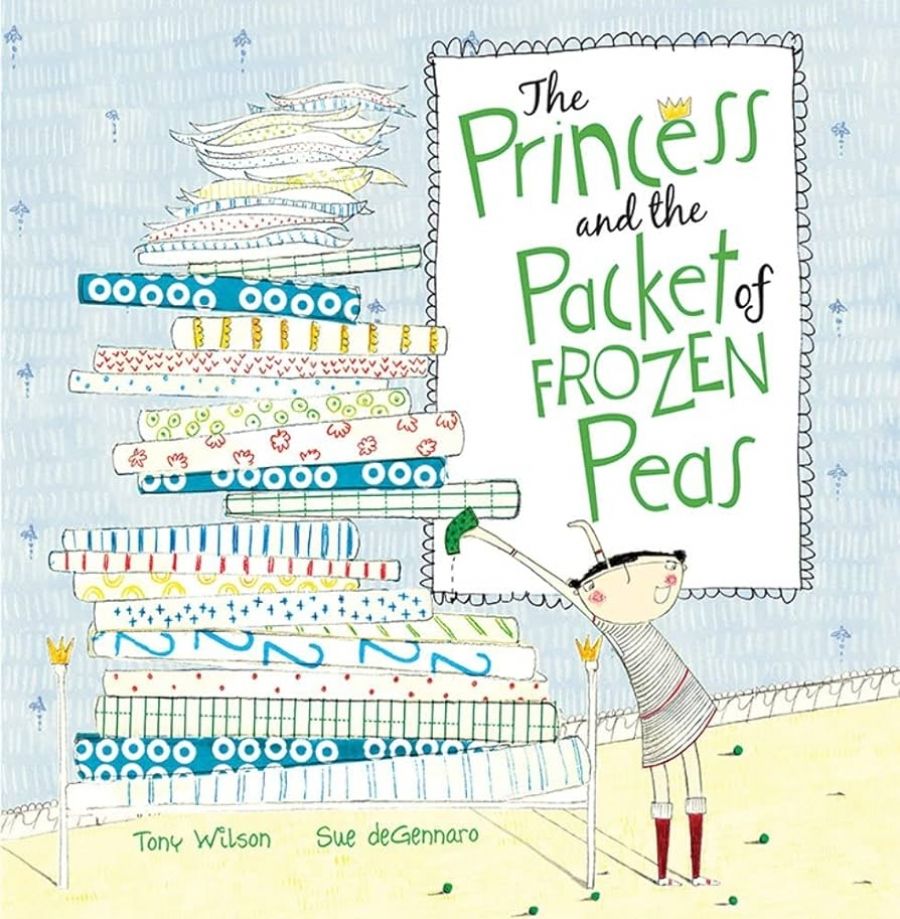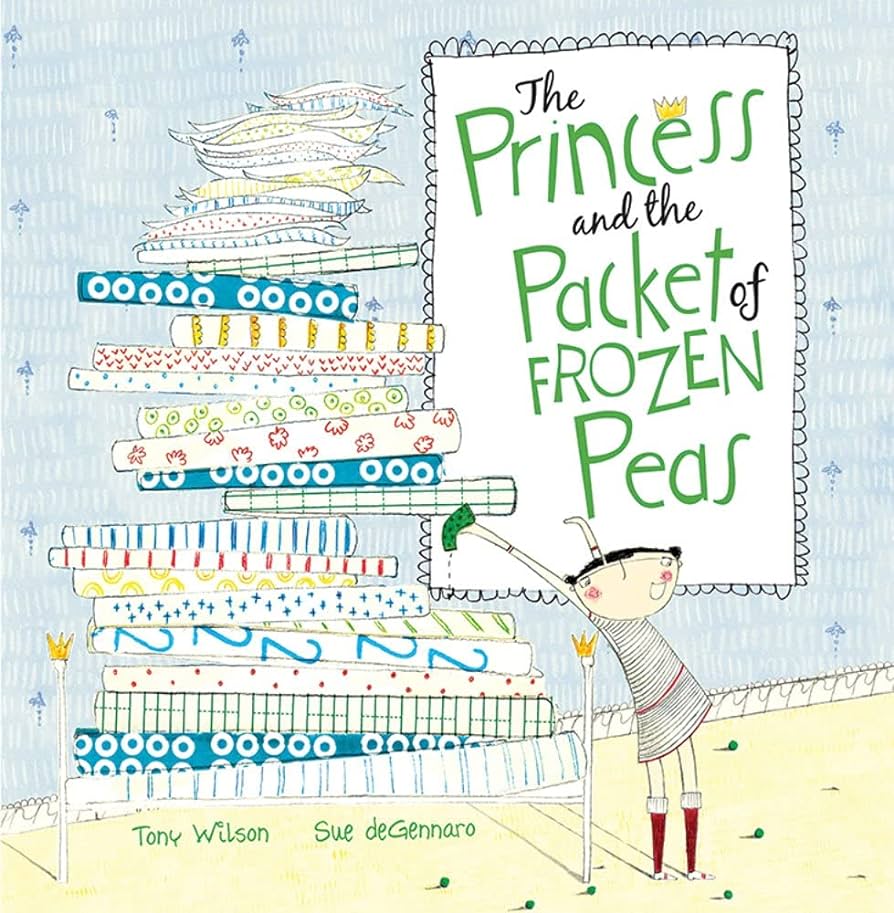
- Free Article: No
- Contents Category: Young Adult Fiction
- Review Article: Yes
- Article Title: Satisfying children’s appetites
- Online Only: No
- Custom Highlight Text:
Food is always a winning ingredient in books for children. Mini-chocoholics will devour I Like Chocolate (Wilkins Farago, $24.99 hb, 28 pp), a delicious book that celebrates the delights of chocolate consumption. Davide Cali has produced an enthusiastic and humorous book with gentle messages about sharing and caring, and eating in moderation. Shaped like a large block of chocolate, I Like Chocolate is ‘sugar-free, won’t melt in your pocket and contains no traces of nuts!’ It is almost as satisfying as a really good truffle.
The story features a young boy who details all the reasons why he likes chocolate, and some of the many ways in which it can be eaten. He also describes how it can be used as a comfort food in a range of situations and as a perfect gift for any occasion. Evelyn Daviddi uses a soft green, red, yellow and, of course, brown palette in her cartoon-style illustrations, which feature a wonderfully expressive cast of characters. This ode to chocolate is sure to entice anyone with a sweet tooth.
- Book 1 Title: The Princess and the Packet of Frozen Peas
- Book 1 Biblio: Scholastic Australia, $26.99 hb, 32 pp
- Book 1 Cover Small (400 x 600):

- Book 1 Cover (800 x 1200):

The story features a young boy who details all the reasons why he likes chocolate, and some of the many ways in which it can be eaten. He also describes how it can be used as a comfort food in a range of situations and as a perfect gift for any occasion. Evelyn Daviddi uses a soft green, red, yellow and, of course, brown palette in her cartoon-style illustrations, which feature a wonderfully expressive cast of characters. This ode to chocolate is sure to entice anyone with a sweet tooth.
The Princess and the Packet of Frozen Peas (Scholastic Australia, $26.99 hb, 32 pp) by Tony Wilson and Sue deGennaro is a fractured fairy tale. Wilson turns on its head the traditional tale of the prince who makes sure he marries a real princess by putting a pea under a heap of mattresses to test her sensitivity. After carefully observing his brother’s wife, who is indeed a real princess, the sporty Prince Henrik, who is mad about hockey and camping, decides that he doesn’t want a princess at all, just someone who shares his interests. Instead of a heap of mattresses and one fresh pea, he tests the various girls who stay at the palace with a thin camping mattress, a sleeping bag and a packet of frozen peas. No one passes the test until his old school friend Pippa comes to stay, and she proves to be just what he was looking for – an unlikely princess.
Wilson’s quirky tale about being nice, sharing common interests and finding true love is perfectly interpreted by deGennaro’s unusual, highly patterned illustrations in soft pastel colours. There is a naïve, child-like exuberance to her drawing style, with buildings that teeter into the sky, thin-limbed characters with simplified but highly expressive faces, and often very individual interpretations of the text. This is a delightfully different and very humorous modern version of a familiar tale.
Paraphernalia’s Present (ABC Books, $27.95 hb, 32 pp), by Diana Lawrenson and Dee Huxley, also features humour and food. It is an endearing tale about loneliness in a frenetic world, friendship and eggs – lots of eggs! It tells the story of the largerthan-life Dottie – a somewhat eccentric lady who loves bright clothes and over-the-top hats – and her pet chook, Paraphernalia. Dottie and Paraphernalia live alone together, and Dottie finds it hard to talk to people, for they are all too busy living their own lives. When Dottie has an accident, Paraphernalia does what comes naturally, and this leads to Dottie no longer feeling so alone. Lawrenson’s beautifully constructed tale builds to a satisfying conclusion. It is enhanced by the lyrical lines of Dee Huxley’s exuberant and colourful illustrations. Both Dottie and Paraphernalia are ample figures who take over the page; especially Dottie, who simply exudes character. This is a warm and ultimately satisfying tale about isolation, community and feathered friends.
Alistair McGhie’s 1 2 3 N P G (National Portrait Gallery, $19.95 hb, 48 pp) also includes food, in the shape of a portrait of Australian culinary doyenne Margaret Fulton standing behind a table groaning with platters of 1970s food favourites. The National Portrait Gallery’s stunning counting book joins a stable of similar books produced by other national institutions to showcase their collections for a young audience.
There are some wonderful images, and some cheeky and highly entertaining verses in 1 2 3 N P G. Unfortunately, they may not resonate with the target audience of preschoolers. Both the verbal and visual language and the concepts dealt with are a little too sophisticated. The use of combined upper and lower-case letters in the numbers could also be confusing for those learning to read, and in some of the images it is difficult to identify which elements should be counted. However, this does not mean that it is not worth sharing this book with older children who, though they may well be past learning basic counting skills, should more readily appreciate the subtlety of the varied images featured and the cleverness of the verses. And for adults, it is quite simply a beautifully designed souvenir of a newly opened gallery and its collection.
Willy and Tilly in Spongeland (Pigtale, $29.95 hb, 92 pp), by Anne Rittman, also suffers from some basic presentation problems, although it is a well-meaning and worthy book with a strong environmental message. It features a multicultural mix of main characters, as well as a range of imaginative creatures such as Spongeboy. It is a somewhat pedestrian story, with a good heart, that tells how two young children magically fly to Spongeland, where, with the help of their friends, they solve a water shortage problem and reconcile two opposing parties.
Willy and Tilly in Spongeland would have benefited from a good edit. The story is overlong, and many of the images are repetitive. It would have worked better as a 32-page picture book rather than in its A4, 92-page format. There is also a problem with the use of right justification in the text. However, the illustrations are stylised and brightly coloured, with strong black outlining; the main characters are cute, and the message about cooperation, sharing and water conservation is made with great conviction.
Maralinga: The Anangu Story (Allen & Unwin, $35 hb, 71 pp) by Yalata and Oak Valley Communities with Christobel Mattingley, does not suffer from such problems. This is a cleverly designed picture book with stunning illustrations and a touching and worthwhile story to tell. The text tells of Maralinga, both before and after the nuclear bomb tests. The Anangu community narrates its own moving stories of its land, its people and its history. The story starts at the beginnings and covers traditional life, white invasion and settlement, life on the mission stations, the devastation of the nuclear testing, and how they have survived and flourished since then. This is living history told in the words of the people who experienced it, and it is all the more moving because of it.
The images used in Maralinga are a combination of Aboriginal dot paintings, naïve paintings of people and landscapes, and both black-and-white and colour photographs, many of historical significance. With its accompanying map, glossary and list of background sources, this is a wonderful resource for schools, as well as an important tale to share with children.
This stunning example of community storytelling and of how history can be brought to life is a tribute to the community that produced it. This book should be part of every child’s literary diet.


Comments powered by CComment